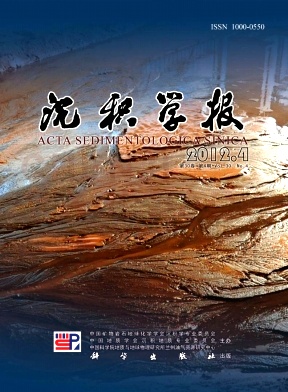Sedimentary Facies of the Padana Formation in the Xigaze Forearc Basin, South Tibet
- Publish Date: 2012-08-10
-
Key words:
- /
- Xigaze Forearc Basin /
- Padana Formation /
- Upper Cretaceous
Abstract: The Padana Formation represents the shallow marine stage of the Xigaze forearc basin in the south Tibet during the Late Cretaceous. This paper focused on the study of the sedimentary facies of the Padana Formation in the area of Sangsang in the southern Tibet. Five types of lithofacies were recognized in the Padana Formation, including conglomerates, sandstones, siltstones, shales and limestones. Abundant sedimentary structures were developed in sandstones and siltstones, including wedge cross bedding, planar cross bedding, grading beds, parallel lamination, mud interclasts, biotic burrows and bioturbations. Plenty of carbonate concretions and some biotic burrows occurred in shales. Based on the studies of lithofacies and sedimentary structures, we interpret that continental shelf and delta are the sedimentary facies of the Padana Formation. Furthermore, the delta facies include prodelta, delta front and delta plain subfacies. Delta front can be further divided into subaqueous distributary channel, mouth bar and interdistributary bay, while delta plain is composed of distributary channel and floodplain. The evolution of the sedimentary environments from continental shelf to delta upwards in the Padana Formation suggests shallowing of the Xigaze forearc basin which may reflect the filling history of the Xigaze forearc basin from underfilled to overfilled stages.
| Citation: | Sedimentary Facies of the Padana Formation in the Xigaze Forearc Basin, South Tibet[J]. Acta Sedimentologica Sinica, 2012, 30(4): 619-628. |






 DownLoad:
DownLoad: